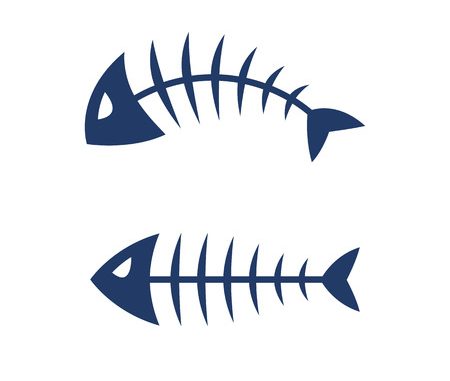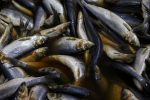
The eating quality of fish is very much dependent on a number of factors especially collagen content which has a direct influence on the texture of raw fish (Sato et al, 1986). The influence however is disputed by some more recent evidence.
Li et al. (2005) found a poor relationship between the firmness of total collagen (TC) content and the firmness of their raw fish fillets . There was also a weak relationship (P = 0.057) between levels of alkali insoluble collagen and fillet firmness which is another similar measure. In contrast, Hagen et al., (2007) found a better relationship between alkali insoluble collagen and raw fillet texture (P < 0.001) which accounted for 24% of the observed variation in their fish of choice, the Atlantic halibut.
The formation of intermolecular cross-links between collagen fibres provides a good deal of the strength and rigidity. Its measurement (not discussed here) is also useful. The formation of cross-links has been determined to occur with age within the connective tissue matrix (Bailey 2001). Both Li et al., (2005) and Hagen et al., (2007) identified a strong relationship between mature collagen cross-linking species, the hydroxylysyl pyridinoline (PYD) content, and raw fillet texture in both Atlantic Salmon (Li et al., 2005) and Atlantic Halibut (Hagen et al., 2007). The linear relationship identified by Hagen accounted for up to 64% of observed variation.
Total collagen content is measured using the hydroxyproline content of lyophilized muscle tissue usually in duplicate, according to the International Organization for Standardization (ISO) method (1994), and is expressed as mg hydroxyproline (hyp)/g dry weight (DW).
The heat soluble collagen (HSC) fraction of the TC in the muscle samples is determined using a modification of a method developed by Hill (1966). Approximately 250 mg of freeze-dried, ground muscle tissue is heated in ¼ strength Ringer’s solution for 30 mins at 65 °C, which reflects the lower thermal stability of fish collagen compared to mammalian collagen (Choi and Regenstein 2000; Cheow et al., 2007; Karim and Bhat 2009).
The hydroxyproline content of the HSC is measured using the ISO method (1994) as for TC content. The HSC is expressed as a percentage of the TC. The heat insoluble collagen (HIC) fraction is determined by subtracting the HSC value from the TC and then expressed as a percentage of TC for each fish sampled.
References
Bailey, A.J. (2001) Molecular mechanisms of ageing in connective tissues. Mech Ageing Dev 122(7) pp. 735–55.
Cheow, C.S., Norizah, M.S., Kyaw, Z.Y., Howell, N.K. (2007) Preparation and characterisation of gelatins from the skins of sin croaker (Johnius dussumieri) and shortfin scad (Decapterus macrosoma). Food Chem 101(1) pp. 386–91.
Choi, S.S.. Regensteppin, .JM. (2000). Physicochemical and sensory characteristics of fish gelatin. J Food Sci 65(2) pp. 194–9.
Hagen, Ø., Solberg, C., Sirnes, E., Johnston, I,A. (2007). Biochemical and structural factors contributing to seasonal variation in the texture of farmed Atlantic halibut (Hippoglossus hippoglossus L.) flesh. J Sci Food Agric 55(14) pp. 5803–8.
Hill, F. (1966). The solubility of intramuscular collagen in meat animals of various ages. J Food Sci 31 pp.161–6.
ISO. (1994). Determination of hydroxyproline content (ISO 3496:1994). ICS 67.120.10: Meat and meat products.
Li, X., Bickerdike, R., Lindsay, E., Campbell, P., Nickell, D., Dingwall, A., Johnston, I.A. (2005). Hydroxylysyl pyridinoline cross-link concentration affects the textural properties of fresh and smoked Atlantic salmon (Salmo salar) flesh. J Sci Food Agric 53(17) pp. 6844–50.
Karim, A.A., Bhat, R. (2009). Fish gelatin: properties, challenges, and prospects as an alternative to mammalian gelatins. Food Hydrocolloids 23(3) pp. 563–76.
Sato, K., Yoshinaka, R., Sato, M., Shimizu, Y. (1986). Collagen content in the muscle of fishes in association with their swimming movement and meat texture. Bull Jap Soc Sci Fish 52(9): pp. 1595–600.



I am genuinely grateful to the holder of this web site who has shared
this great paragraph at at this time.